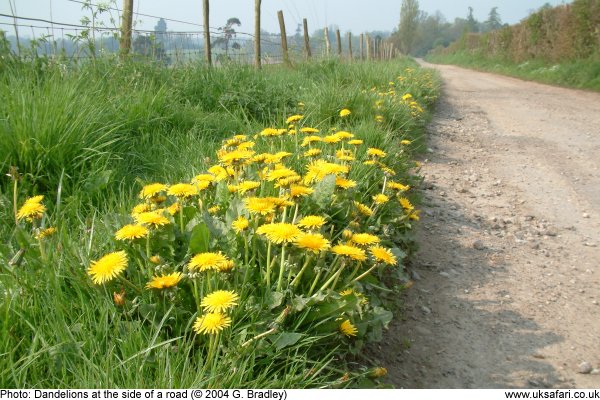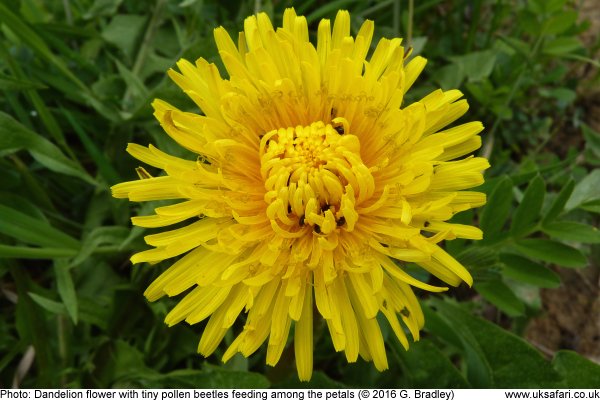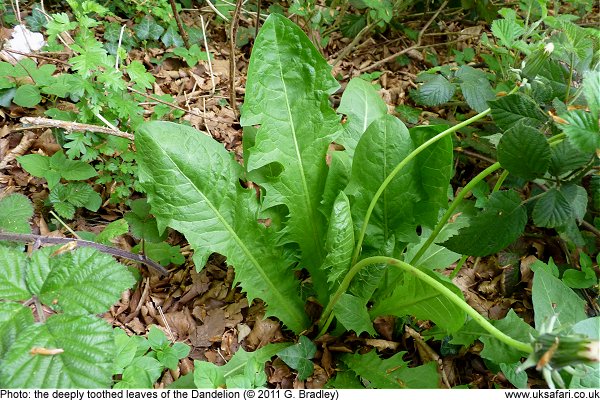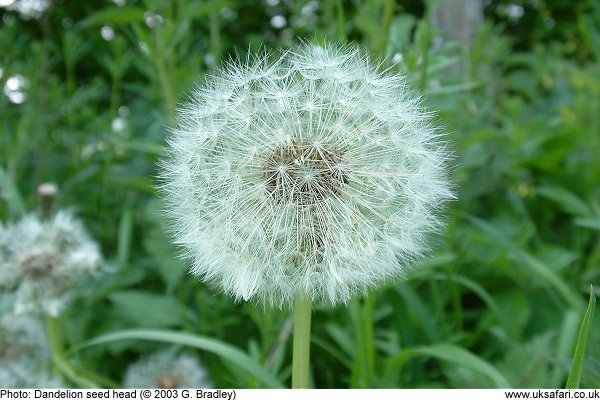 Quick Facts
Quick Facts
Scientific name: Taraxacum officinale
Size: Grows to a height of 30cm
Distribution: Found throughout the UK
Flowering Months: March to October
Habitat: Found in fields, meadows, gardens, waste ground and roadside verges
Special features: The bright yellow flowers of the dandelion produce a blaze of colour right through the summer. The flower heads are made up of around 200 individual florets, which close at night and during bad weather.
The jagged edges of the leaves give this plant its name. Dandelion is an adaptation of the French name "Dent de Lion" which means lions tooth.
The leaves of the dandelion are edible, and can be eaten in salads, but as with all wild foods be sure to get the plant correctly identified before tasting.
After pollination, the flower produces a delicate globe of seeds, each seed having its own tiny white parachute. A gentle breeze is enough to distribute the seeds over a wide area. A common name for this seed head is "Dandelion Clock".
 Related Pages
Related Pages

 Popular Pages
Popular Pages
Amphibians, Bats, Badgers, Beetles, Birds, Birds of Prey, Bumble Bees, Butterflies, Caterpillars, Creepy-Crawlies, Deadly Spiders, Dolphins, Dragonflies, E-Postcards, False Widow Spiders, Free Newsletter, Frogs, Fungi, Garden Spiders, Glow-Worms, Grey Squirrels, Hedgehogs, House Spiders, Ladybirds, Mammals, Marine Mammals, Moths, Owls, Reptiles, Spiders, Toads, Trees, Wildlife Hospitals
Copyright © 2020 G. Bradley UK Safari. All rights reserved | About Us | Links | Contributors


 Dandelions
Dandelions





